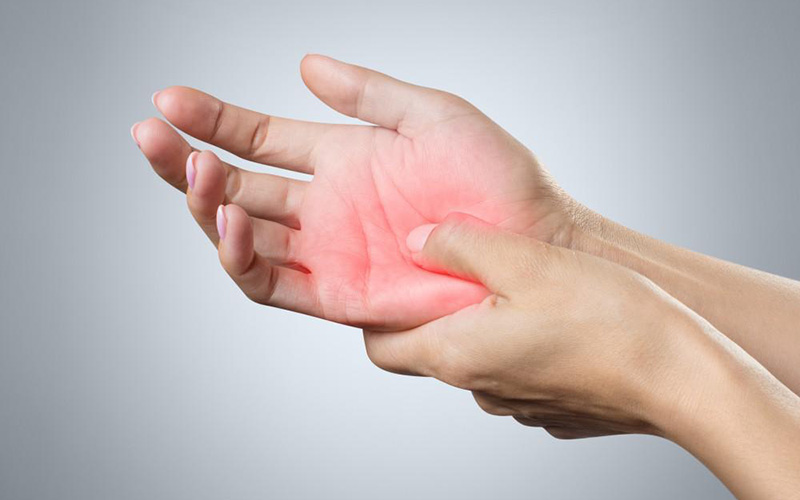
It’s estimated that one in five people globally, i.e., 1.5 billion people, are suffering from chronic pain. The prevalence is even worse with age, and most people must learn to deal with this physical discomfort for the rest of their lives. While there are many clinical medications ideal for managing pain, alternative sources of medicine such as CBD are proving to be ideal for pain management.
So, how does CBD work for pain? This article offers a review of CBD oil for pain and how you can use it to reduce discomfort.
What is Pain?
It’s an uncomfortable feeling that tells you something is wrong with part or parts of your body. Pain can be steady throbbing, pinching, aching, or any other way. It can be mild, moderate, or severe, depending on the cause. Common symptoms of pain include:
- A dull ache
- Throbbing or burning
- Squeezing or stinging
- Soreness or stiffness
Types of Pain
They are different types of pain depending on the causal factors and severity of where they occur in the body. The five most common types of pain include:
- Acute pain
- Chronic pain
- Radicular pain
- Neuropathic pain
- Nociceptive pain
Benefits of CBD for Pain Management
According to the National Centers for Complementary and Integrative Health (NCCIH), CBD could provide users with modest pain benefits. Based on the current user reviews and research reports, here are some of the possible benefits of CBD for pain management.
Arthritis Pain Relief

CBD can treat arthritis pain by blocking certain receptors in the body that allow the levels of anandamide to increase in the body significantly. Scientists believe that the cannabis compound affects the way the body responds to these signals by reducing the level of inflammation and pain.
Cancer Treatment Relief
Some cancer patients also use CBD. Lab research on lab mice has shown that cannabidiol can help to shrink cancerous tumors. According to the National Cancer Institute (NIC), CBD can reduce side effects of chemotherapy such as:
- Vomiting
- Pain
- Feeling of nausea
- Lack of appetite
- Multiple Sclerosis (MS)
MS is an autoimmune health condition that affects the nerves and the brain. It commonly results in painful muscle spasms. In some people, the muscle spasms can be so strong and frequent, resulting in constant pain. However, reports indicate that CBD oil could potentially help reduce the severity of muscle spasms.
Even though the results produced by CBD compounds are usually modest, reviews show that CBD reduces the severity of the pain symptoms.
Neuropathic Pain

It’s normally caused by nerve damage. Neuropathic pain is a common illness resulting from injuries such as herniated discs and infections like shingles. However, there is still a need to understand the effectiveness of CBD in neuropathic pain management, especially the benefits, risks, and recommended dosages.
Chronic Pain

The human body consists of the endocannabinoid system (ECS), a cell-signaling system responsible for homeostasis. According to some research studies, CBD interacts with the ECS receptors found in the immune system and brain to ease chronic pain. It’s an effective and potent compound that has pain-relieving and anti-inflammatory properties. This makes it ideal for chronic pain management for back pain and fibromyalgia conditions.
How to Use CBD for Pain Relief
There are many forms of CBD products, which means that users have multiple options to choose from. This means that you can apply CBD topically take it orally or sublingually. The most commonly used methods include:
By Mouth
It’s the most preferred method by people who want to experience the lasting side effects of CBD. This means that you must swallow the CBD oil, capsules, or edibles then the compound will get absorbed into the bloodstream via the digestive tract. However, you need to understand that oral intake of CBD takes longer to kickstart. The onset may be delayed by 1-2 hours depending on the dosing, meal presence in your stomach, and the effects of the stomach acids.
CBD gummies and cookies are quite popular edibles since they come in the pre-dosed form. Additionally, they are available in different flavors to cater to different taste preferences. Capsules are ideal for daily pain management, especially if you are looking for pre-dosed forms of CBD that are tasteless and flavorless.
Sublingual Intake
You need to place the CBD oil under the tongue. The compound will then be absorbed sublingually by the blood capillaries found under the tongue into the bloodstream. Sublingual intake usually provides almost instate effects (they may kickstart after 120 seconds). However, the effects will also be felt for a short period, say 15-60 minutes.
Topical Application
It’s ideal for a localized effect on a specific body part. The topical application involves applying the CBD product externally, and it’s ideal for treating localized conditions such as back pain, joint pain, wrist pain, etc.
Inhalation
You need to inhale the CBD via a vape pen or vaporizer. Inhalation provides almost instant effects since the CBD compound gets absorbed into the bloodstream via the capillaries found in the lung’s lining. It’s important to exercise caution when using vape products since they might result in lung irritation.
CBD Dosage for Pain
How much CBD should you take? Well, until now, there isn’t a universal CBD dosage recommendation since CBD is treated as a supplement. Additionally, many factors influence CBD dosage, including:
- Weight
- Age and sex
- Metabolism
- The severity of your medical condition
Note: always start low and go slow. Start with a lower dosage and then gradually work your way until you find the dosage that suits you.

Table 1.0 CBD Dosage for Pain by Weight
|
Pain Level/ Weight |
Less than 25 lbs. |
25-45 lbs. |
45-85 lbs. |
85-150 lbs. |
180-240 lbs. |
Over 240 lbs. |
|
Mild Pain |
4.5 mg |
6 mg |
9 mg |
12 mg |
18 mg |
22.5 mg |
|
Medium Pain |
6 mg |
9 mg |
12 mg |
22.5 mg |
22.5 mg |
30 mg |
|
Intense Pain |
9 mg |
12 mg |
15 mg |
27 mg |
27 mg |
45 mg |
|
Severe Pain |
12 mg |
15 mg |
18 mg |
25 mg |
35 mg |
55 mg |
Side Effects of CBD
CBD has a good safety profile, so it’s popular among consumers. However, it might still result in unwanted side effects because of allergic reactions, drug interactions, and sometimes high dosage intake. Common side effects include:
- Dry mouth
- Feeling of nausea
- Fatigue or tiredness
- Change in weight
- Change in sleep patterns
- Loss or increase in appetite
Final Thoughts
CBD is one of the ideal sources of alternative medicine for pain. It works with the endocannabinoid system to provide the body with analgesic effects, anti-inflammatory, antioxidant, and therapeutic properties. This makes it effective for treating everyday mild pain such as slight headaches to chronic conditions such as severe arthritis.
It’s a non-addictive product that is generally safe with minimal side effects. Besides that, it’s affordable and ideal for lasting use. However, if you are dealing with chronic pain and under medication, ensure that you first consult your doctor.
